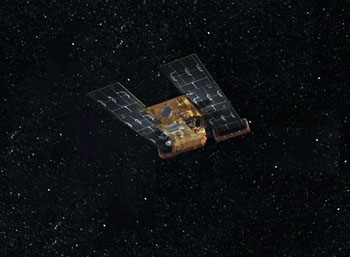 On March 24, the NASA mission Stardust ran out of fuel and sent its last data to Earth. At 16:33 Pacific time the mission was officially ended.
On March 24, the NASA mission Stardust ran out of fuel and sent its last data to Earth. At 16:33 Pacific time the mission was officially ended.
Launched in 1999, Stardust became a wildly successful mission. It passed by the asteroid Annefrank, sampled the dust from one comet (Wild 2) – returning those samples to Earth in a special re-entry container while the spacecraft itself flew on – and looked closely at another (Tempel 1) to see the crater left by the Deep Impact mission.
It’s always sad to see a mission end, but I like to also keep my eyes ahead. Stardust may be done, but Rosetta flies on, heading toward a rendezvous with a comet where it will deploy an actual lander. The Dawn spacecraft will enter orbit around the main-belt asteroid Vesta later this year as well. And, of course, MESSENGER is now orbiting Mercury and returning data.
We learned a lot from Stardust, and we get better with this endeavor of solar system exploration as a result.
And that’s the whole point, isn’t it?
Image credit: NASA/JPL-Caltech
Related posts:
- Followup: Deep Impact crater on Tempel 1
- Stardust snaps close-ups of a second-hand comet!
- A comet creates its own snowstorm!
- The return of Stardust
- Stardust@Home starts NOW